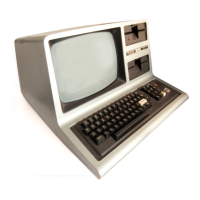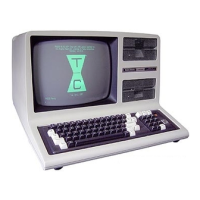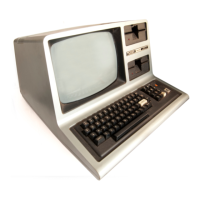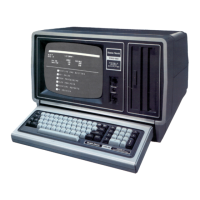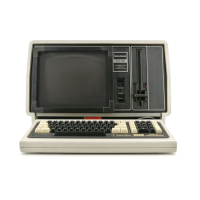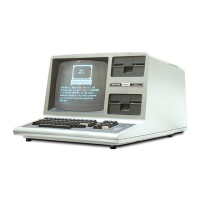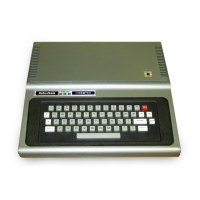MODEL
II
TRSDOS
Disk File Requirements
There are three general configurations
of
diskettes that may be used in the
TRSDOS
system:
• Full
system
-
The
factory release copy
of
TRSDOS
for use in drive
o.
•
Minimum
system
-
May
be used in drive 0afterinitialization.
• Data-
May
only be used in drives
1,2
and 3.
"Full
System"
This is a diskette which
can
be used to start
('
'bootstrap'
')
the operating system and
performall the library commands, utilities, and supervisorcalls. The factory
release copy ofTRSDOS is a full system.
The full systemcontains many files which will not be needed for day-to-day
applications-
but which may
come
in handy every now and then. Forthis reason,
you should always keep yourfactory release version
ofTRSDOS
intact, and use a
backup copy as a working master.
Why and
How
of
FullSystem Diskettes
If
you have a Disk Expansion Unit, you will probably find it most convenient to
have a Full System Diskette in drive
0 at all times. This will give you access to all
of
the utilities and systemfunctions without a disk swap being necessary.
For
most
applications, there is still plenty
of
room left on a full system diskette for program
storage and for small to medium sized data files. Larger data files may be stored on
data diskettes in the Disk Expansion Unit.
It is faster, by the way, to
put
different files or programs being accessed at the same
time on different drives since, in most cases, the drive seek time will be reduced.
On
each
drive, the read/write head will usually be closer to the desired location
of
the file
~urrently
being accessed. Using
CREATE
before building the data file will
help insure that the file will be stored in a large block
of
contiguous storage on
diskette. This will also help speed up disk accesses.
The working master thatyou create will be a full system diskette. The original
masteris also a full system diskette and both should be kept that way.
40

